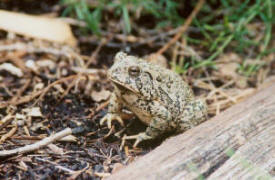We developed a pilot program focused on the spatial distribution of wetlands in Nebraska's Rainwater Basin landscape. Results will help guide management activities in this ecologically important region and serve as a model for similar monitoring and study in other herpetologically rich areas.
Goals
To establish a program to monitor populations of amphibians in south central Nebraska's wetland complex in order to detect changes in presence in this region over time (if monitoring is continued). The acquired data will provide inferential insight into the presence or absence of amphibian species and changes in individual species presence and community composition. We expect that if our methodologies are proven usable by Nebraska Game and Parks Commission staff as a way to assess land management practices, they will readily translate to other regions where similar land management is being implemented.
Current Status
We gathered data that can provide inferential insight into the presence, or absence, of amphibian species and changes in individual species presence and community composition:
- Following ongoing restoration activities
- Following ongoing anthropogenic land use/land cover changes
- In relation to existing wetland-patch network characteristics
- In relation to adjacent upland land use/land cover
- In relation to environmental contaminants originating as runoff from adjacent farmed lands.
Additionally, we assessed biases associated with amphibian call surveys and utilized methods to account for differences in detectability inherent in call survey techniques. Data collected will be provided to the national monitoring program as well. A manuscript was published in the February 2007 issue of the Journal of Wildlife Management, "Observer Bias in Anuran Call Surveys." GIS spatial analysis continues.
This project is complete with results compiled into a master's thesis.

Graduate Student
Aaron Lotz
Funding
Nebraska Game and Parks Commission




